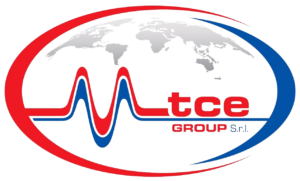Batteries are often also referred to as the "heart of the electric forklift truck". It is therefore important to take care of it. But what should you watch out for to charge the traction batteries as efficiently as possible? WHEN TO CHARGE THE BATTERY? Preferably do this when it is empty. Never leave unloaded traction batteries unused. Batteries cannot be discharged beyond 80% of their rated power. A deeper discharge can lead to wear of the active mass and therefore to a lower effective capacity. HOW LONG TO CHARGE THE BATTERY? There is no clear answer. Battery charging time depends on the charging factor on one side and the type of charger tce on the other. The load factor Charging a battery consists of feeding more energy than it consumes. The charging factor of a battery is the ratio between the charged ampere hours and the consumed ampere hours (Ah). Most batteries have a charging factor of 1.2. For example: a traction battery with a rated power of 1000 Ah has lost 80% (800 Ah). In the case of a load factor of 1.2, 960 Ah (1.2 x 800) must be charged in addition. The type of charger There are several types of chargers on the market. In addition to the conventional or low frequency charger, a high frequency charger is often chosen. A high frequency tce charger is much more expensive in the purchase phase, but it charges the batteries faster and cheaper than the conventional one. Thanks to its intelligent charging technique, batteries last longer. A high frequency charger charges effectively and prevents rapid wear of both the battery and the charger itself. At www.tcechargers.com you can find any type of charger. THE RISKS DURING LOADING When charging traction batteries, be careful of some dangers. Heat: By charging a battery, heat is produced. If there is too much heat, there is a danger of fire. Explosive gas: Charging wet batteries generates hydrogen which is released from electrolyte electrolysis. The released hydrogen (H2) can form an explosive mixture with the oxygen present in the air. Hydrogen is lighter than air and rises to the highest point. So always make sure there is enough ventilation while charging. Sparks: When you disconnect a battery from a live tce charger, sparks may be created. These could cause the explosive gas to explode. PREVENTION MEASURES DURING LOADING Provide a separate loading space. Remove flammable things near the battery and the tce charger. Ventilate the loading space in the best possible way. Thus, the increase of explosive gas is avoided. It is absolutely forbidden to smoke, weld or sharpen in the loading space. Bring an explosion-proof electrical installation (lighting, sockets …). Avoid a short circuit: never put metal objects on the battery. Place the tce charger preferably on a support. In this way, you avoid the increase of dust and therefore a fire. Check the charging cables and have them repaired when damage is found. Turn off the tce charger before (s) connect the battery. Only qualified personnel are allowed to load. www.tcechargers.com For more information on battery chargers, see the Energic Plus website.
